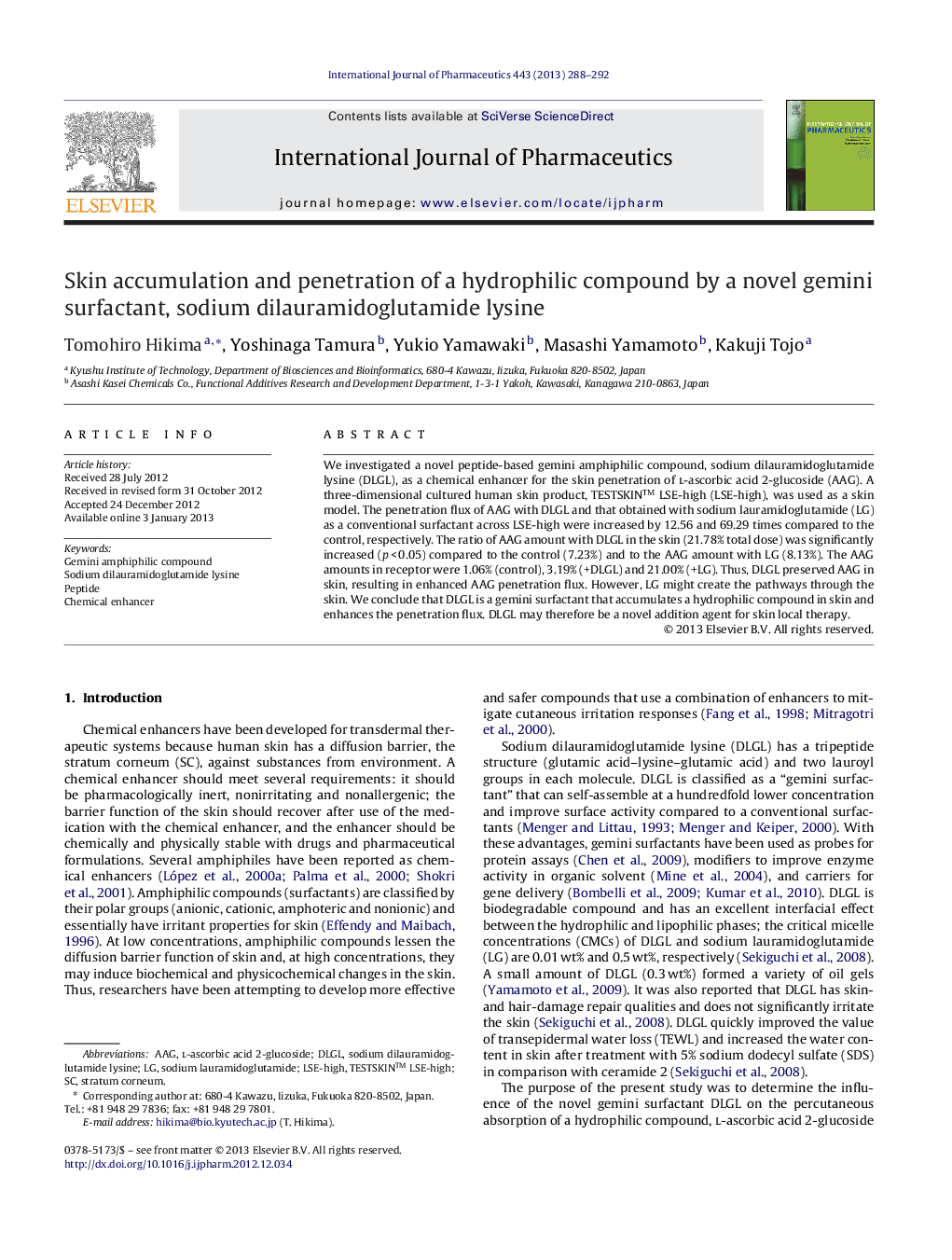| Article ID | Journal | Published Year | Pages | File Type |
|---|---|---|---|---|
| 2502612 | International Journal of Pharmaceutics | 2013 | 5 Pages |
We investigated a novel peptide-based gemini amphiphilic compound, sodium dilauramidoglutamide lysine (DLGL), as a chemical enhancer for the skin penetration of l-ascorbic acid 2-glucoside (AAG). A three-dimensional cultured human skin product, TESTSKIN™ LSE-high (LSE-high), was used as a skin model. The penetration flux of AAG with DLGL and that obtained with sodium lauramidoglutamide (LG) as a conventional surfactant across LSE-high were increased by 12.56 and 69.29 times compared to the control, respectively. The ratio of AAG amount with DLGL in the skin (21.78% total dose) was significantly increased (p < 0.05) compared to the control (7.23%) and to the AAG amount with LG (8.13%). The AAG amounts in receptor were 1.06% (control), 3.19% (+DLGL) and 21.00% (+LG). Thus, DLGL preserved AAG in skin, resulting in enhanced AAG penetration flux. However, LG might create the pathways through the skin. We conclude that DLGL is a gemini surfactant that accumulates a hydrophilic compound in skin and enhances the penetration flux. DLGL may therefore be a novel addition agent for skin local therapy.
Graphical abstractFigure optionsDownload full-size imageDownload high-quality image (132 K)Download as PowerPoint slide
